Spinach
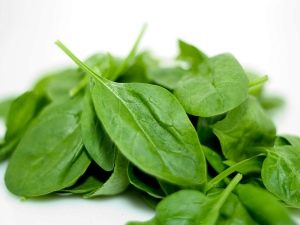
Spinach (Spinacia) is a well-known herbaceous vegetable plant that belongs to the Amaranth family (Amaranthaceae). It enjoys great fame in different countries of the world, because it helps in the treatment of various diseases, has a large number of useful substances, pleasant taste and is used to combat extra pounds.
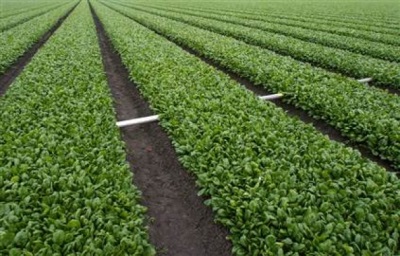
Appearance
Spinach is an annual vegetable. It can reach 35–40 cm in height. The leaves of the plant are of various shapes - rounded, notched or pinnate. The color of the leaves is different shades of green. The shape of the leaves is smooth or corrugated. Depending on the thickness, the leaves are divided into smooth-leaved (light green) and fat-leaved (dark green).
Male plant with a small number of leaves that quickly form flowering stems. A female plant with large leaves and produces seeds for further planting. The fruits of the plant look like nuts in the shape of an oval.
Spinach ripens early. It is necessary to wait only a month from shoots to full ripening. Seeds ripen for about three months. Pollination occurs with the help of wind.
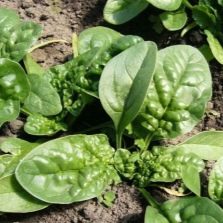
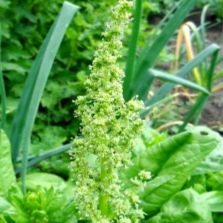
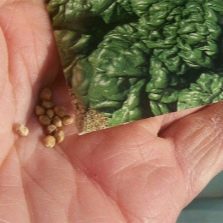
Kinds
- Garden (Spinacia oleracea) is an annual plant that is the most common variety. It has many varieties.
- New Zealand or Tetragonium (Tetragonia) is an annual plant characterized by fleshy and thick leaves. It can be used even during the flowering period, because all the useful qualities remain.
- Multi-leaved, zhminda, multi-leaved gauze (Chenopodium foliosum) is an annual plant whose height reaches 80 cm. This species is characterized by the presence of berries that look like raspberries.
- Malabar or Ceylon spinach, basella (Basella) - this variety has a perennial root system and annual shoots. This plant reaches 3 meters and is presented in the form of a liana.
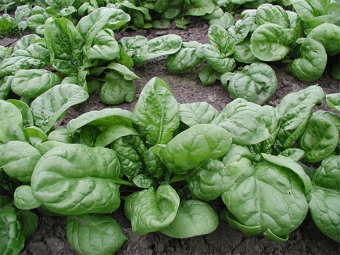
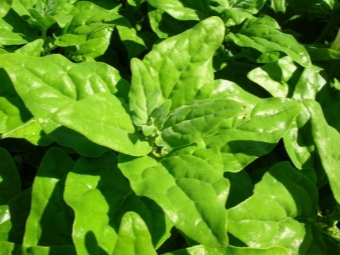
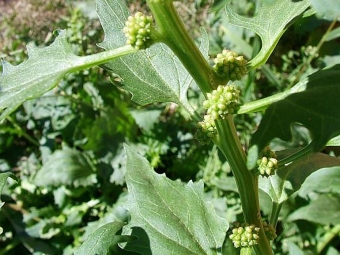
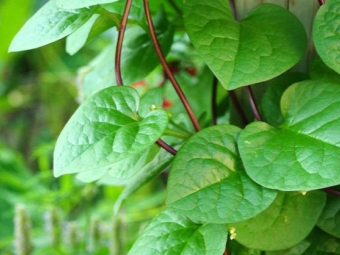
Where does it grow?
On the territory of Ancient Persia, the cultivation of spinach began to be practiced even before our era. In European countries, they learned about it only in the Middle Ages, when the knights of the Crusades brought it. Spinach was widely spread in Spain; there were entire plantations at the monasteries. Spinach is also grown in Russia, but this happened much later, only in the 19th century. Wild spinach grows in Afghanistan, Turkmenistan and the Caucasus. Today, spinach is widely used in all cuisines of the world, and for fans of a healthy diet, it is a must-have in their daily diet.
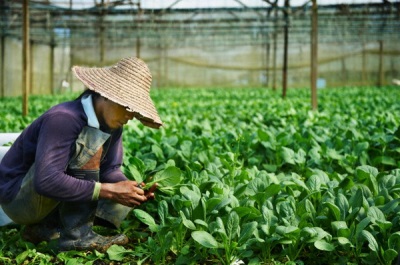
spice making method
- Fresh spinach leaves are harvested before flowering plants and washed thoroughly.
- Next, the leaves must be thoroughly dried. You can hang them outdoors or use modern dryers, while keeping the temperature up to 45 degrees.
- Dried leaves should be put in a glass container and sealed tightly.
- A dark place is the best place to store leaves.
- Leaves should be crushed before use.
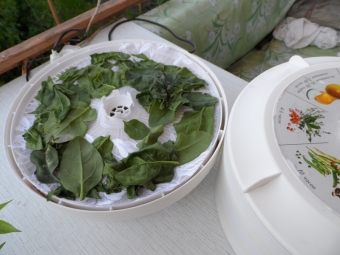
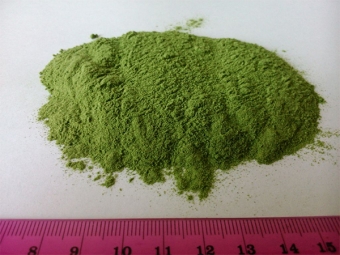
Also, spinach leaves can be frozen and added to dishes as needed. Before freezing, it is better to chop the leaves.
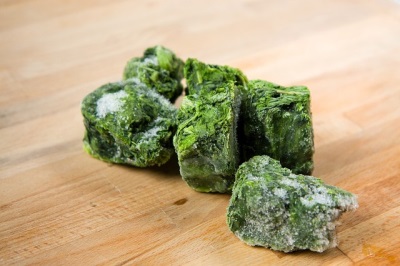
How to choose and store?
The main criterion for choosing a plant is freshness. Spinach leaves should be carefully examined, dark spots indicate long-term storage of the plant. You can also feel the freshness of the plant to the touch. If, when pressed, the leaves do not crunch, look sluggish, then it is better to refrain from buying this spinach. The bright green color is one of the main indicators of the freshness of spinach.
It is strictly forbidden to store fresh spinach for more than two days in the refrigerator. In this case, the leaves must be placed without prior washing in a container with water and only in this form stored in the refrigerator. Only frozen castings can be stored for several months.
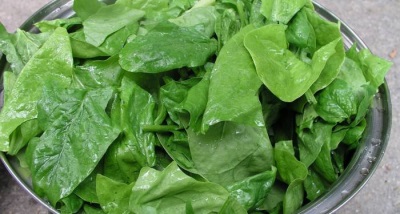
Peculiarities
- It is an early maturing herbaceous plant resistant to frost.
- Spinach has a neutral, slightly pronounced taste, so it can be used in various dishes.
- Young leaves have almost no bitterness, old leaves are very bitter.
- Spinach is a vitamin champion among vegetable greens, it contains a huge amount of vitamins, macro- and microelements.
- Spinach is a food coloring that can be used to decorate eggs for the Easter holidays.
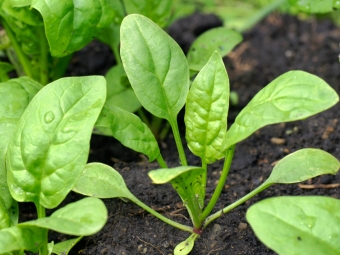
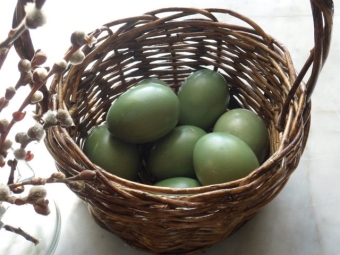
Nutritional value and calories
In 100 grams of raw spinach leaves - 22 kcal, and in thermally processed - 23 kcal.
Nutritional value per 100 grams of spinach:
- Proteins - 2.9 gr.;
- Fats - 0.3 gr.;
- Carbohydrates - 2 gr.;
- Ash - 1.8 gr.;
- Water - 91.6 gr.;
- Dietary fiber - 1.3 gr.;
- Organic acids - 0.1 gr.;
- Unsaturated fatty acids - 0.1 gr.;
- Mono- and disaccharides - 1.9 gr.;
- Starch - 0.1 gr.;
- Saturated fatty acids - 0.1 gr.
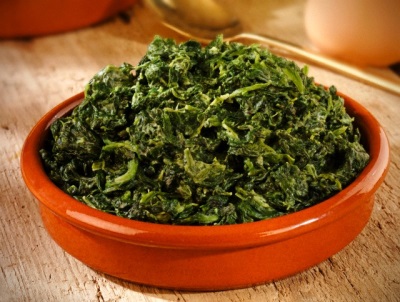
Chemical composition
| vitamins | Macro and microelements | ||
|---|---|---|---|
| beta carotene | 4.5 mg | Ca (calcium) | 106 mg |
| A (RE) | 750 mcg | Mg (magnesium) | 82 mg |
| B1 (thiamine) | 0.1 mg | Na (sodium) | 24 mg |
| B2 (riboflavin) | 0.25 mg | K (potassium) | 774 mg |
| B5 (pantothenic) | 0.3 mg | P (phosphorus) | 83 mg |
| B6 (pyridoxine) | 0.1 mg | Fe (iron) | 13.51 mg |
| B9 (folic) | 80 mcg | Zinc (Zn) | 0.53 mg |
| C | 55 mg | Copper (Cu) | 13 mcg |
| E (TE) | 2.5 mg | Manganese (Mn) | 0.897 mg |
| H (biotin) | 0.1 µg | Selenium (Se) | 1 mcg |
| K (phylloquinone) | 482.9 mcg | ||
| PP (Niacin equivalent) | 1.2 mg | ||
| Choline | 18 mg |
You can learn more about the beneficial properties of spinach from the video.
Properties
- Spinach has a large amount of nutrients, so it is recommended to use it especially for children and pregnant women.
- This plant is characterized by a toned property.
- Spinach leaves have a diuretic and laxative effect on the body.
- Spinach is an anti-inflammatory agent.
- This plant will help to cope with stress and restore strength, because it has a calming effect on the body.
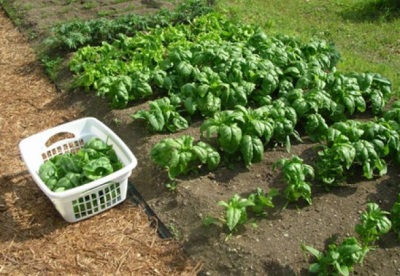
Harm
Spinach should be added to dishes immediately, it cannot be stored for a long time, as nitrogenous salts begin to form from nitrates. These salts adversely affect human health. If heat treatment is required before use, then the first water must be drained to get rid of nitrates. And already on the second water, you can start preparing the plant.
Spinach contains oxalic acid, which adversely affects the entire body, so to neutralize its action during cooking, you need to add a small amount of milk to the water. Spinach is high in oxalic acid, which is harmful in large quantities. Therefore, people who have kidney or urinary tract diseases are strongly discouraged from eating this plant. It is better to eat exclusively young leaves, in which the level of this acid is much lower than in old ones.
Contraindications
- with urolithiasis;
- with kidney stone disease;
- with gallstone disease;
- with gout;
- with rheumatism;
- in diseases of the duodenum.
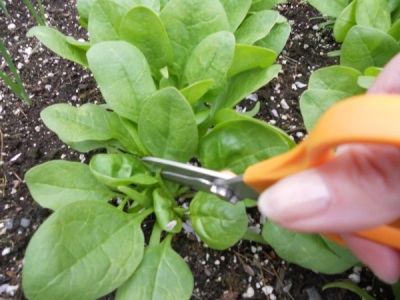
Juice
- Spinach juice helps to cleanse the body, relieve fatigue and recharge energy for the whole day.
- It is a stimulant of many body systems: it has a beneficial effect on the gastrointestinal tract, and also helps to cope with dry cough or asthma.
- In inflammatory processes, it is indispensable. So, it is used to rinse the gums, helps with inflamed tonsils.
If a person leads a sedentary lifestyle, then 1-2 glasses of juice per week will help tone and fortify the body. For people who are engaged in physical activity or sports, the amount of juice should be increased. For normal development, children and adolescents need to drink a cocktail of spinach juice and almond oil, to prepare it: spinach and a green apple are whipped in a blender and a few drops of almond oil are added.
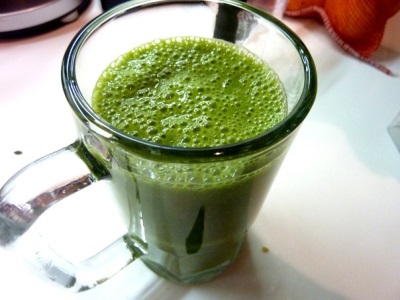
Application
In cooking
- Spinach is an excellent dye.
- The plant is added to canned food.
- Spinach is used as a filling for pies.
- Its leaves are added to vegetable salads, sauces or snacks.
- Spinach helps the body absorb protein better, so it should be consumed along with meat, fish, cheese, etc.
Spinach can be added to mashed potatoes, desserts, or dough to color them green. If you add spinach to cutlets, then the meat will be easier to digest, and the dish will become juicy. A healthy and tasty breakfast option is cheese or cottage cheese with spinach, such a dish can energize the body for the whole day.
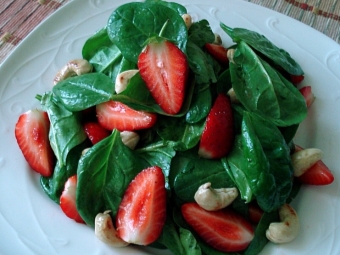
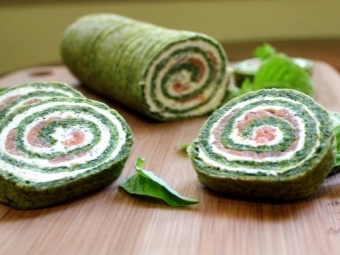


Noodle and spinach casserole
Ingredients:
- 500 grams of fresh spinach
- 2 teaspoons spoons of lemon juice
- 2 pcs. eggs
- 2 table. spoons of sugar
- 100 grams cooked noodles
- 1 table. a spoonful of butter
- Salt and pepper to taste
Cooking:
Take fresh spinach leaves, boil a little and mash. Sprinkle spinach with lemon juice. Separately, beat the eggs, and then add to the spinach. Then add boiled noodles, butter. Add salt and sugar. Pour the resulting mass into a baking dish and bake for 40 minutes at a temperature of 180 degrees.
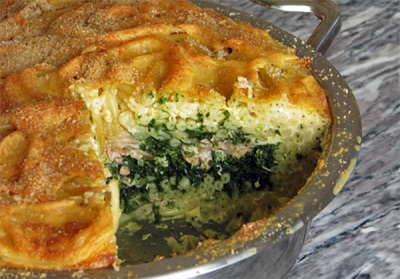
Soup puree with spinach
Ingredients:
- 200 grams of fresh spinach leaves
- 350 grams of potatoes
- 0.7 liters of water
- 1 liter milk (low fat)
- 2 table. spoons of vegetable oil
- 200 grams of rye bread
- 3 pcs. onion
- A pinch of salt and pepper
Cooking:
Peel and finely chop the onion. Peel and cut potatoes into small cubes. Put the pan on the fire, pour in the oil and simmer the onion for no more than 10 minutes. Pour water into a frying pan and heat to boiling point. Add potatoes to boiling water and boil for 10 minutes. Stew spinach in a pan for about 10 minutes. Add salt and pepper to taste. Leave the soup to cool slightly and grind with a blender. Pour milk into a separate container and boil. Pour the mass from the blender into hot milk and bring to a boil. Cut the bread into cubes and place in the oven until crispy. This puree soup should be sprinkled with breadcrumbs before serving.
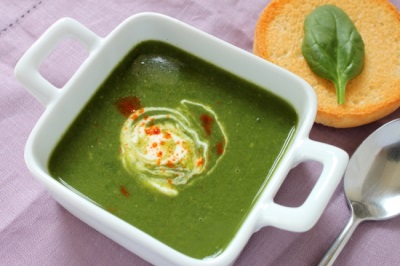
In medicine
- Spinach is used in the treatment of gastritis, because it has a beneficial effect on the functioning of the entire gastrointestinal tract.
- Spinach leaves help with anemia and hypertension.
- This plant is indispensable in the treatment of enterocolitis.
- A large amount of iodine, which is contained in the leaves, is necessary for the normal functioning of the thyroid gland.
- Spinach takes part in the metabolism of carbohydrates, in the production of certain hormones, and is also a reliable protection of the mucous membranes.
- The chlorophyll and fiber found in spinach are used to relieve constipation and cleanse the body of harmful substances.
- Spinach contains lutein, which is used for the functioning of the eyes: relieves fatigue and stress.
- Regular consumption of spinach will help strengthen the gums and keep the teeth healthy.
- Spinach prevents the formation of tumors in the body.
- Fresh spinach leaves are actively used for insect bites or abscesses.
- The constant use of spinach is an excellent prevention of rickets.
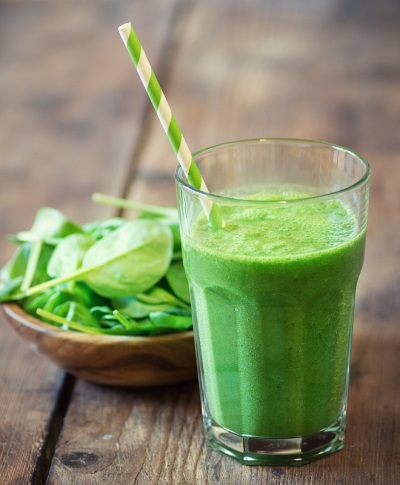
Traditional medicine recipes
Spinach leaves are used to treat a variety of diseases:
- with anemia, constipation or sore throat - infusion: take 1 table. a spoonful of finely chopped leaves, pour 200 ml of boiling water, let it brew for 1 hour, strain. You need to use the infusion 50 ml before meals;
- with convulsions - you need to add fresh spinach leaves to food, but first they should be boiled in almond oil, and then mixed with butter;
- for burns, abscesses or eczema The leaves are applied externally. They need to be boiled in olive oil until softened and applied to sore spots;
- with hemorrhoids - take 100 ml of spinach juice and 100 grams of almond oil, mix thoroughly and drink in small doses throughout the day;
- with tuberculosis or tumors - you should take 10 grams of the leaves of the plant, pour 100 ml of boiling water, leave to brew for 2 hours. Take the infusion 3 times a day, 50 ml;
- to restore strength in the postoperative period or after serious illnesses - mix 50 ml of fresh spinach juice and 200 ml of dry red wine.You need to take a drink for a whole week, 1 glass a day.
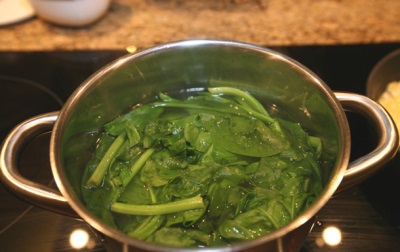
When losing weight
Thanks to its small number of calories and the presence of many nutrients, spinach helps to get rid of extra pounds quickly enough. In this case, the body will not feel discomfort, all the necessary nutrients will be provided by spinach.
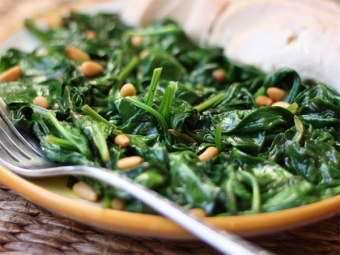
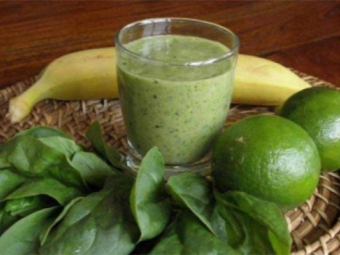
Varieties
Depending on the ripeness group, there are such varieties of spinach:
- Early ripe (harvest can be harvested in two weeks): Virofle, Stoic, Godri, Fortress, Matador, Round dance, Dolphin, Cook Misha, Puma, Gigantic, Rembord;
- Mid-season (harvest is ready in three weeks): Popeye, Space, Nikitos, Rembrandt, Spokein, Zhirnolistny, Emerald;
- Late-ripening (you need to wait almost a month for the harvest): Varangian, Victoria, Ladya.
cultivation
Spinach can be grown almost all year round. To get a very early harvest, you should plant the seeds at the end of summer and immediately cover it from future frosts. Already in the fall, small leaves will appear, which, under cover, can survive the winter and in early spring it will be possible to harvest the first crop. Spinach is a frost-resistant plant, because it perfectly tolerates temperatures down to 6 degrees below zero. When the snow begins to melt, spinach will begin to grow rapidly and after two weeks the plant can be harvested.
Often, spinach is sown in the autumn season and even before the first frosts, you can harvest a fresh crop. Many people prefer this particular spinach, because it is characterized by juiciness and crunchiness. Spinach that grows in the fall has high yields because only the leaves grow, so the result is more greens.
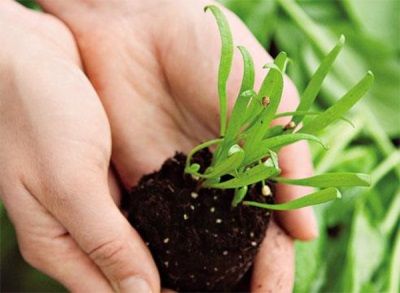
The soil
Spinach grows well in fertile, well-drained soil. The best solution is sandy loam or loam.Before planting the plant, you should check the acidity of the soil, because at high rates, spinach cannot grow. The optimal acidity index for spinach is 6.6–7.0. You can not grow spinach on calcareous or carbonate soils, because then the plant does not receive enough iron. If heavy soil is used for planting, then organic fertilizers should be used.
fertilizers
Depending on the fertility of the soil, the amount of mineral and organic fertilizers should be calculated. Potash and phosphorus fertilizers or manure should be applied only in the autumn season when digging up the soil. If non-chernozem soil is used for planting spinach, then 10-12 g / m² of nitrogen, 5-7 g / m² of phosphorus, 10-14 g / m² of potassium should be used during digging. Fertilizing the plant should be done very rarely, because the growing season is short, and spinach has the ability to accumulate nitrates.
Sowing
In autumn, the soil is fertilized, and in the spring, before planting, the soil is cultivated and nitrogen fertilizers are added. You can immediately sow several varieties so that you can use fresh leaves at any time of the year. To get a harvest in early spring, the seeds should be planted in late summer, then rosettes of leaves will appear in the fall, and they can survive the winter. With the arrival of spring warmth, spinach will continue to grow, and in two weeks it will be possible to harvest the first crop.
Spinach seeds absorb moisture very poorly, so before planting it is better to leave them for a day in water at room temperature, and then dry them thoroughly. When sowing, plants should be left 20–30 cm between rows and seeds should be planted at a depth of 2–3 cm.
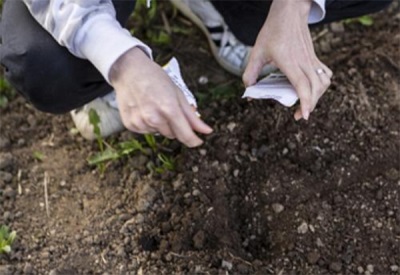
Care
Spinach requires careful care, because it suffers without enough moisture, so in hot, dry weather, the crop needs to be watered. When the spinach reaches 10 cm in height (the presence of two true leaves), you need to thin it out. You should also remember about fertilizing the soil with its further loosening. During the growing season of spinach, it is necessary to carry out several weeding and loosening.
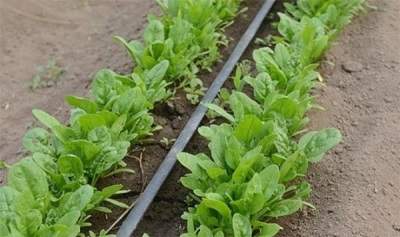
Harvesting
Spinach can be harvested when it is in the rosette phase of 5-8 leaves. This period lasts until flowering shoots begin to grow. Then the plant can be mowed or pulled out along with the root system.
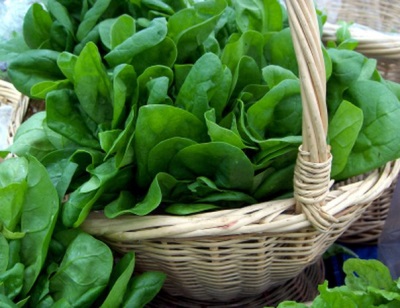
Interesting Facts
- Spinach is the most popular ingredient in all cuisines of the world.
- Spinach was considered a rich source of iron, but Avon Wolf made a typo in his study, put the comma wrong. In fact, this vegetable plant does not have 35 mg of iron per 100 grams of the product, but only 3.5 mg. Although this figure is also very significant, because it is 25% of the required amount of iron.
- In France, spinach is called the "broom of the stomach" and the "king of vegetables."


















Cool idea with freezing spinach!
I think now periodically in the mornings to myself juice from spinach to do.
Useful information! This year, for the first time, I planted spinach in the country, we just pick the leaves, wash them and, like a salad, we eat. I liked spinach more than lettuce, now I will only grow it. And one more thing: insects eat lettuce, but spinach does not. I don’t know for what reason, but only the salad was eaten in a sieve, and the spinach is jaunty, and we only eat it.